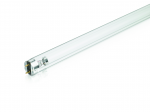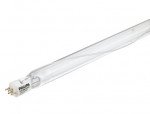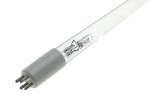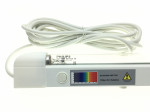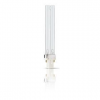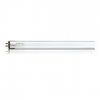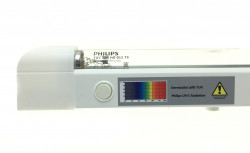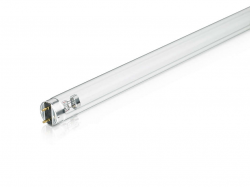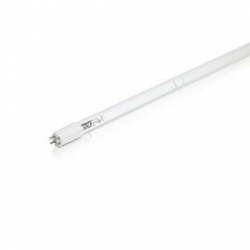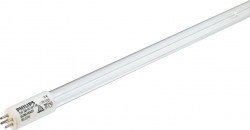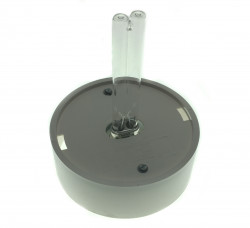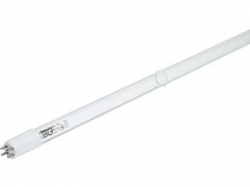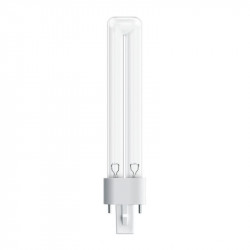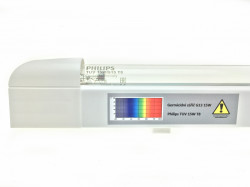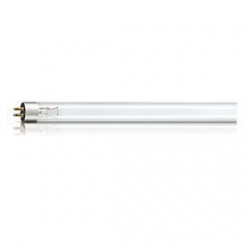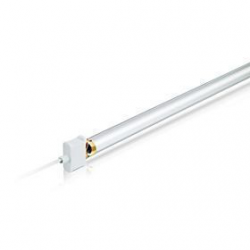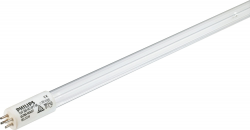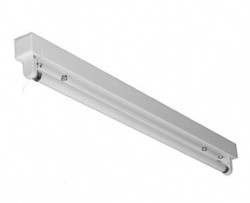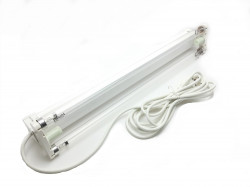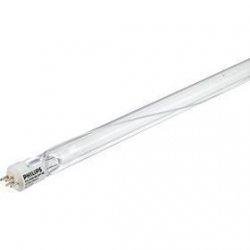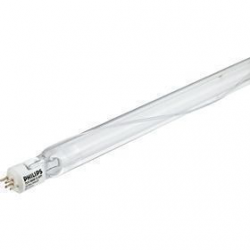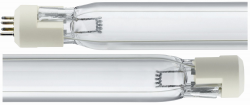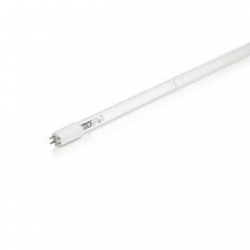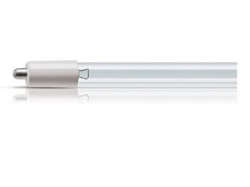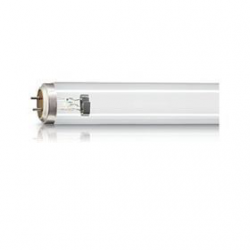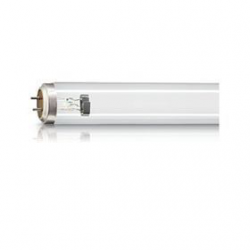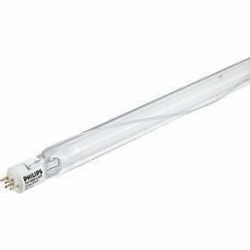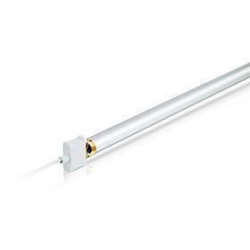Ultra-Violet (UV) light is invisible to the human eye and is divided into UV-A, UV-B and UV-C.
UV-C is found within 100-280 nm range. In the graph can be seen that germicidal action is maximized at 265 nm with reductions on either side. Philips Low pressure UV-C lamps have their main emission at 254 nm where the action on DNA is 85% of the peak value and 80% on the IES curve. As a result, our germicidal lamps are extremely effective in breaking down the DNA of micro-organisms. This means that they cannot replicate and cause disease4.
Micro-organisms effective resistance to UV light varies considerably. Moreover, the environment of the particular micro-organism greatly influences the radiation dose needed for its destruction.
The UV light emitted by a source is expressed in watts (W) and the irradiation density is expressed in watts per square meter (W/m2). For germicidal action dose is important.The dose is the irradiation density multiplied by the time (t) in seconds and expressed in joules per square meter (J/m2). (1 joule is 1W.second). From figure 10 it can be seen that germicidal action is maximised at 265 nm with reductions on either side. Low pressure lamps have their main emission at 254 nm where the action on DNA is 85% of the peak value and 80% on the IES curve. For wavelengths below 235 nm the germicidal action is not specified, but it is reasonable to assume that it follows the DNA absorption curve. Micro-organisms effective resistance to UV light varies considerably. Moreover, the environment of the particular micro-organism greatly influences the radiation dose needed for its destruction. Water, for instance, may absorb a part of the effective radiation depending on the concentration of contaminants in it. Iron salts in solution ware well known inhibitors. Iron ions absorb the UV light. The survival of micro-organisms when exposed to UV light is given by the approximation:
Philips UV-C disinfection luminaires
Philips has 35 years of experience in UV-C lighting and strong application expertise. We are now launching a new range of luminaires and cabinets. UV-C lighting has the power to neutralize most micro-organisms.¹ It disinfects radiated surfaces, which contain bacteria and viruses and helps to reduce from spreading them even further. In hospitality areas, schools and public washrooms. In offices, retail outlets and factories. Even on modes of transport such as aircraft, buses and trains.
Application areas
Philips UV-C luminaires with UV-C lamp systems neutralize micro-organisms, reducing the risk of contracting or spreading viruses and bacteria in a wide range of applications:
Retail - Disinfecting shopping carts, shelves and counters
Hair and beauty salons - Disinfect client rooms, floor, mirror, chair, counter surfaces and other sensitive areas
Schools - Disinfect classroom walls, floors, desks and surfaces
Offices - Disinfect work rooms, meeting spaces and corridors
Banking - Disinfect counters, cash machines and work surfaces
Hospitality - Disinfect guest rooms, reception areas and health club facilities
Food outlets - Disinfect preparation surfaces and equipment
Washrooms - Disinfect vanity units, basins and mirrors
Transportation - Disinfect interior and exterior surfaces of different vehicles and passengers' waiting spaces
DANGER: Risk Group 3 UV product. Like any disinfection system, UV-C lamps and devices must be installed and used in the correct way. Direct exposure to UV-C can be dangerous and result in a sunburn-like reaction to the skin and serious damage to the cornea. As UV-C is invisible to the eye, the UV-C batten must be installed together with adequate safeguards to ensure that the UV-C batten can be operated in a safe way. The UV-C battens are only to be used as components in a system that consists of adequate safety safeguards such as, but not limited to, those indicated in the mounting instructions and/or user manuals. Direct exposure to UV-C is dangerous. Philips UV-C products must only be sold through qualified partners and installed by professionals according to our stringent safety and legal requirements. Our UV-C products are not meant to be used in applications or activities which may cause and/or lead to death, personal injury and/or damage to the environment.


